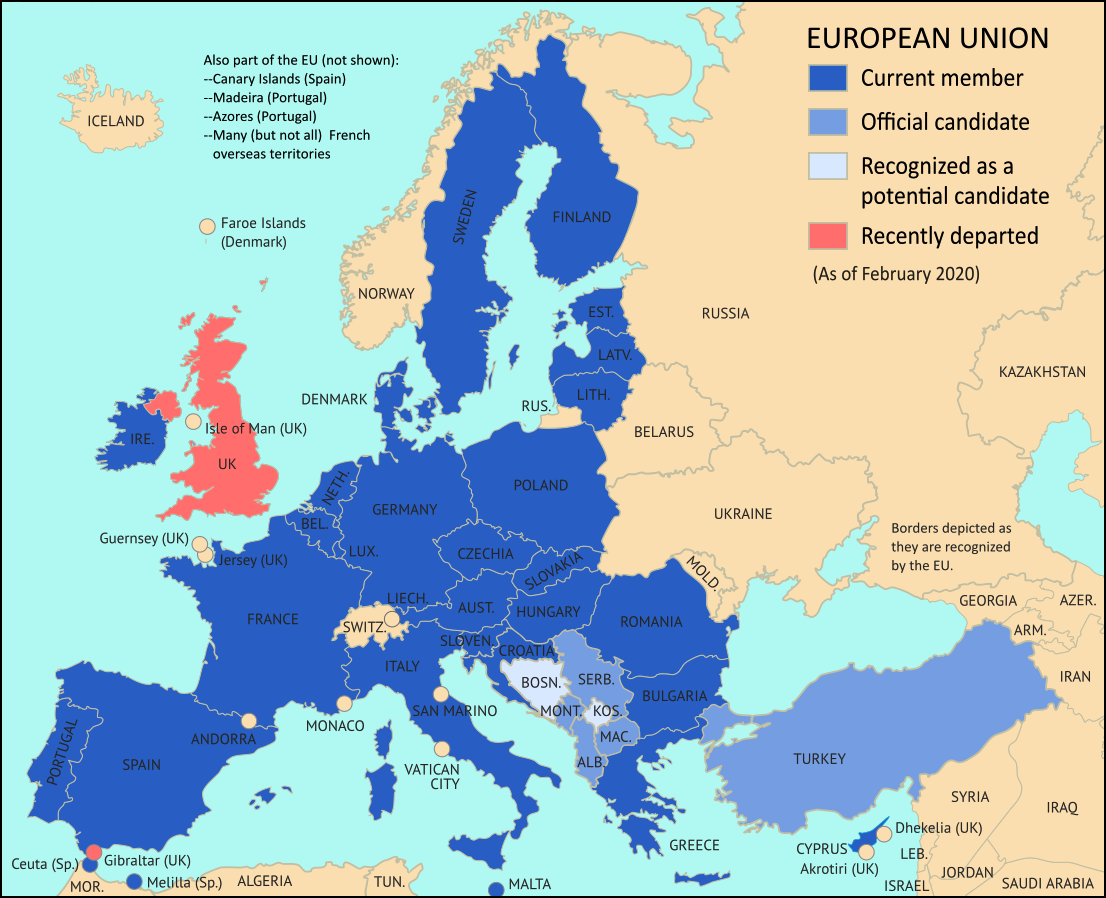International Relations
India-EU Trade and Investment Agreements
- 05 Jul 2022
- 6 min read
For Prelims: Free Trade Agreement, Data Secure, Non-tariff barriers, India-EU Summit, European Union, Most Favored Nation
For Mains: India-EU Trade and Investment Agreements, Issues leading to Deadlock
Why in News?
Recently, India and the European Union concluded the first round of negotiations for India-EU Trade and Investment Agreements in New Delhi.
- 52 technical sessions covering 18 policy areas of the free trade agreement and 7 sessions on Investment Protection and Geographical Indicators were held.
- The second round of negotiations is scheduled to take place in September 2022 in Brussels.
What is India-EU Trade and Investment Agreements?
- About:
- India and EU had launched talks for having a wide-ranging Free Trade Agreement (FTA), officially called broad-based BTIA, long ago in 2007.
- The BTIA was proposed to encompass trade in goods, services and investments.
- However, the talks stalled in 2013 over differences on market access and movement of professionals.
- Scope:
- India’s bilateral trade with the European Union amounted to over 116 billion dollars in 2021-22.
- Despite the global disruptions, bilateral trade achieved impressive annual growth of more than 43% in 2021-22.
- Currently, the European Union is India’s second-largest trading partner after the US, and the second-largest destination for Indian exports.
- The EU's share in foreign investment inflows to India has more than doubled from 8% to 18% in the last decade, making the EU the first foreign investor in India.
What are the Related Challenges?
- Most Favoured Nation:
- EU investment treaty practice illustrates its keenness to include the Most Favored Nation (MFN) provision in its investment treaties.
- India is averse to including the MFN provision in investment treaties.
- EU investment treaty practice illustrates its keenness to include the Most Favored Nation (MFN) provision in its investment treaties.
- Fair and Equitable Treatment:
- EU’s practice is to include in its investment treaties the Fair and Equitable Treatment (FET) provision.
- FET is an important substantive protection feature that enables foreign investors to hold States accountable for arbitrary behavior.
- The FET provision is missing in India’s Model Bilateral Investment Treaty and the recent investment treaties that India has signed.
- EU’s practice is to include in its investment treaties the Fair and Equitable Treatment (FET) provision.
- Multilateral Investment Court:
- EU has been batting for a Multilateral Investment Court (MIC) to reform the existing arbitration-based Investor-State Dispute Settlement (ISDS) system.
- Yet, India’s official position on MIC is unknown. India hasn’t contributed to the ongoing negotiations towards establishing a MIC, which is perplexing for a country that champions a rules-based global order.
- EU has been batting for a Multilateral Investment Court (MIC) to reform the existing arbitration-based Investor-State Dispute Settlement (ISDS) system.
- Non-Tariff Barriers:
- Presence of non-tariff barriers on Indian agricultural products in the form of sanitary and phyto-sanitary(SPS) measures which are too stringent and enable the EU to bar many Indian agricultural products from entering its markets.
- The non-tariff barriers in pharmaceuticals that the EU has imposed include requirements of World Trade Organisation- Good Manufacturing Practice certification, import bans, antidumping measures and pre-shipment inspection among others.
What is European Union?
- About:
- The European Union is a group of 27 countries that operate as a cohesive economic and political block.
- 19 of these countries use EURO as their official currency.
- 8 EU members (Bulgaria, Croatia, Czech Republic, Denmark, Hungary, Poland, Romania and Sweden) do not use the euro.
- The EU grew out of a desire to form a single European political entity to end centuries of warfare among European countries that culminated with World War II and decimated much of the continent.
- The EU has developed an internal single market through a standardised system of laws that apply in all member states in matters, where members have agreed to act as one.
- Significance of EU for India:
- The EU works closely with India to promote peace, create jobs, boost economic growth and enhance sustainable development across the country.
- As India graduated from low to medium income country (OECD 2014), the EU-India cooperation also evolved from a traditional financial assistance type towards a partnership with a focus on common priorities.
- At the 2017 EU-India Summit, leaders reiterated their intention to strengthen cooperation on the implementation of the 2030 Agenda for Sustainable Development and agreed to explore the continuation of the EU-India Development Dialogue.
Way Forward
- Geo-Economic Cooperation: India can pursue EU countries to engage in Indo-pacific narrative, geo-economically if not from security prism.
- It can mobilise massive economic resources for sustainable development of regional infrastructure, wield political influence and leverage its significant soft power to shape the Indo-Pacific discourse.
- Finalisation of Indo-EU BTIA Treaty: India and the European Union have been negotiating a free trade deal, but it is pending since 2007.
- Therefore, for closer convergence between India and the EU, both should engage in finalisation of the trade deal as soon as possible.
- Collaborating With Important Players:
- India’s partnership with France now has a strong regional anchor in the Indo-Pacific narrative.
- India is also engaged in negotiations for a trade pact with the UK.







